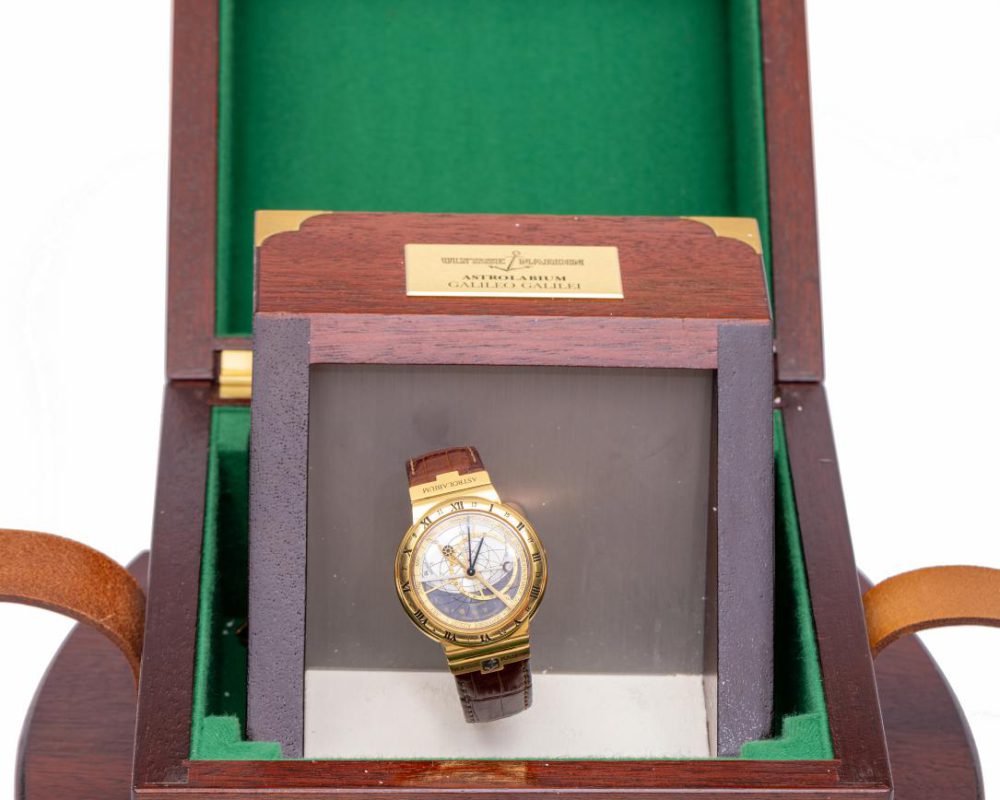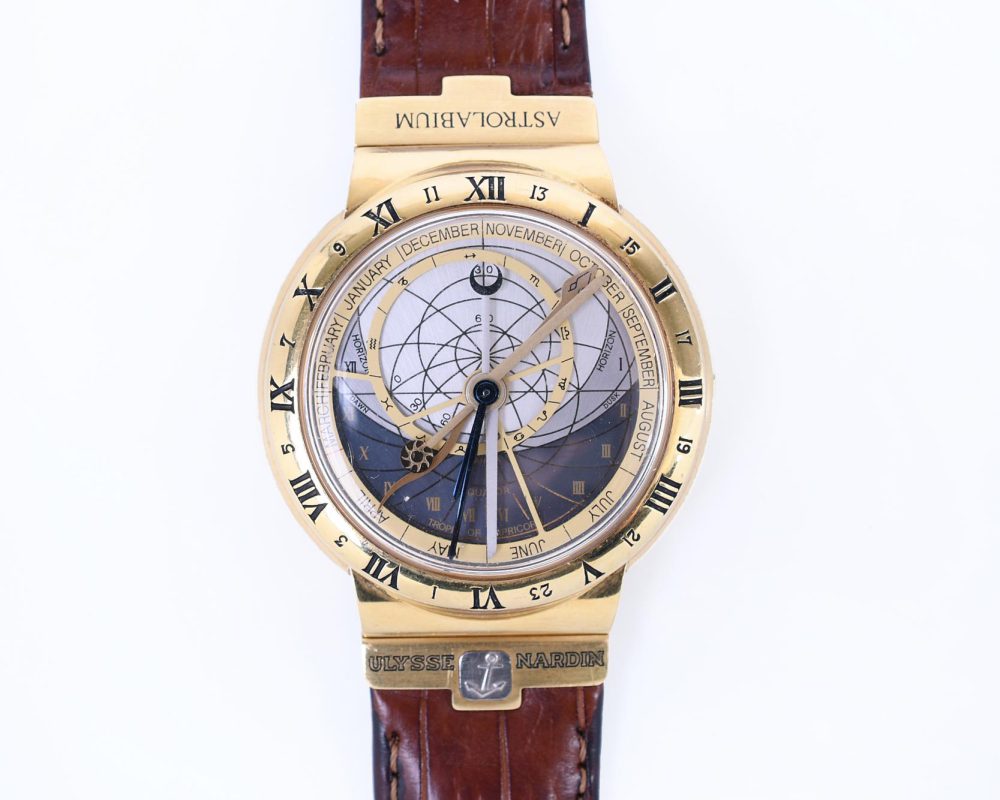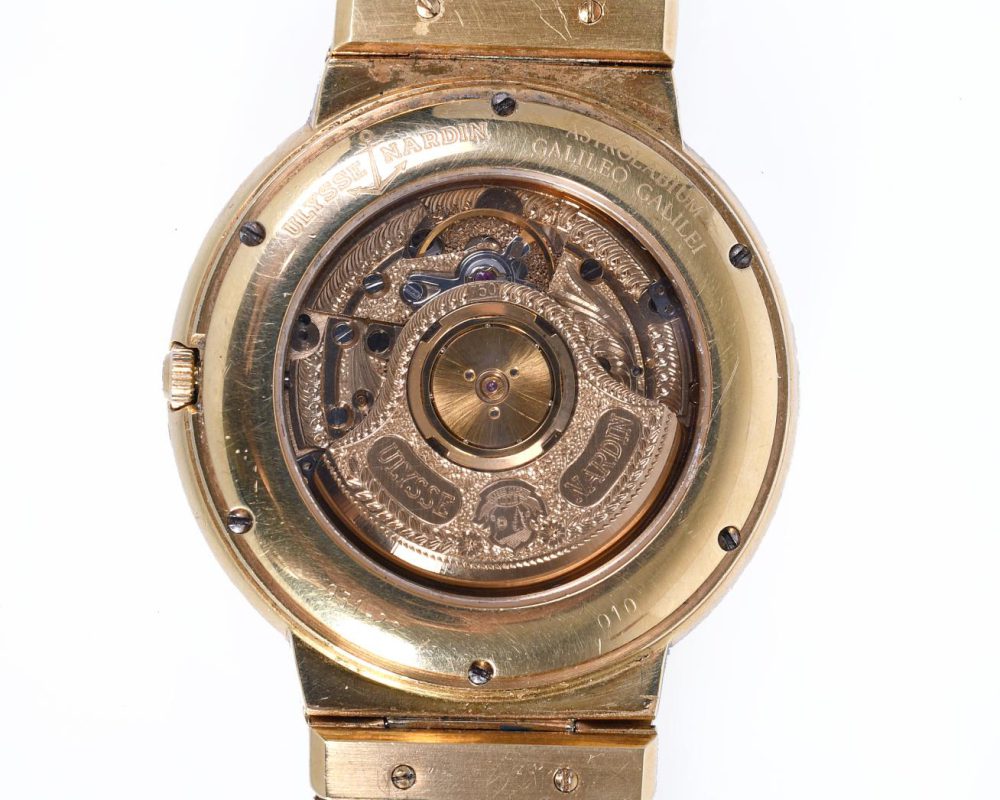Three extraordinary watches
Eighteenth-century grandeur in a watch
One of the oldest watches we offer in this auction was made in Paris around 1750.
J. Baptiste Baillon, (died 1772) was a very innovative watchmaker in his time. His clientele included not only the crème de la crème of Paris, but even members of the French and Spanish royal families. Baillon paid great attention to the detailing of his dials and cases. The gold key watch that we offer is a beautiful example of this. Not only the back and the edge of the case have a high-quality decoration in enamel de peinture, but the inside also has an enamelled representation of an Arcadian landscape. The timepiece is signed J. Bte Baillon A Paris and numbered 3408. Today, Baillon watches and clocks can be admired in famous collections such as those of the Louvre, Versailles, the Metropolitan in New York and our own Rijksmuseum.
Lot number 500: J. Baptiste Baillon, High level gold alloy key watch, ca. 1750.
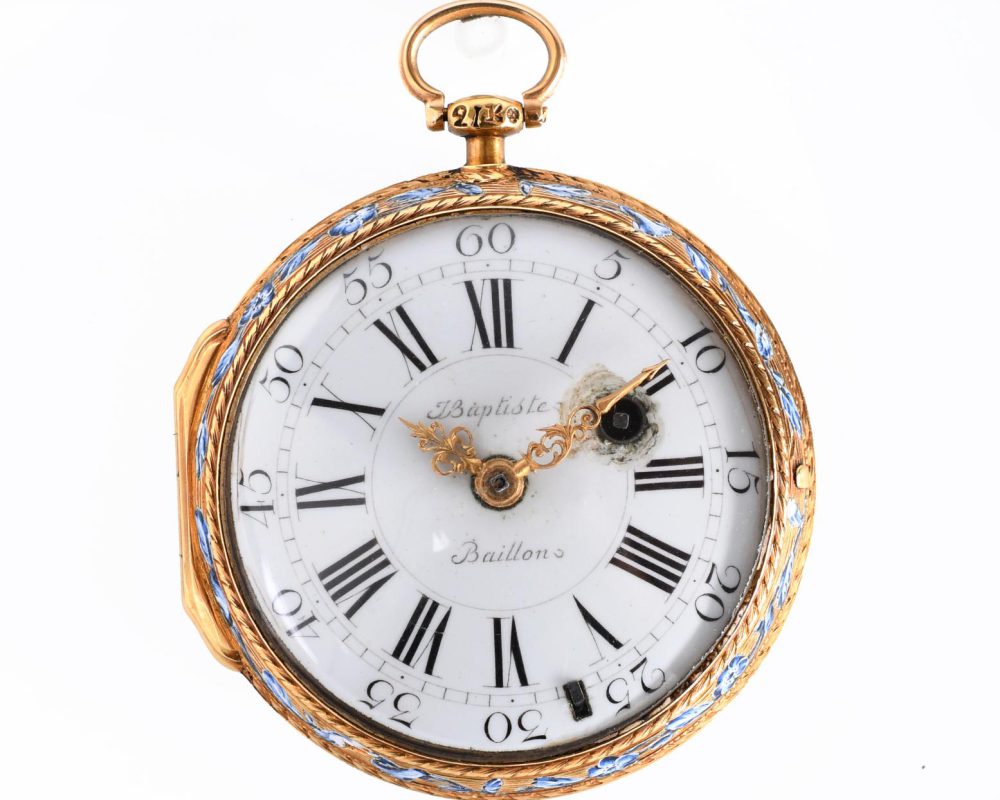
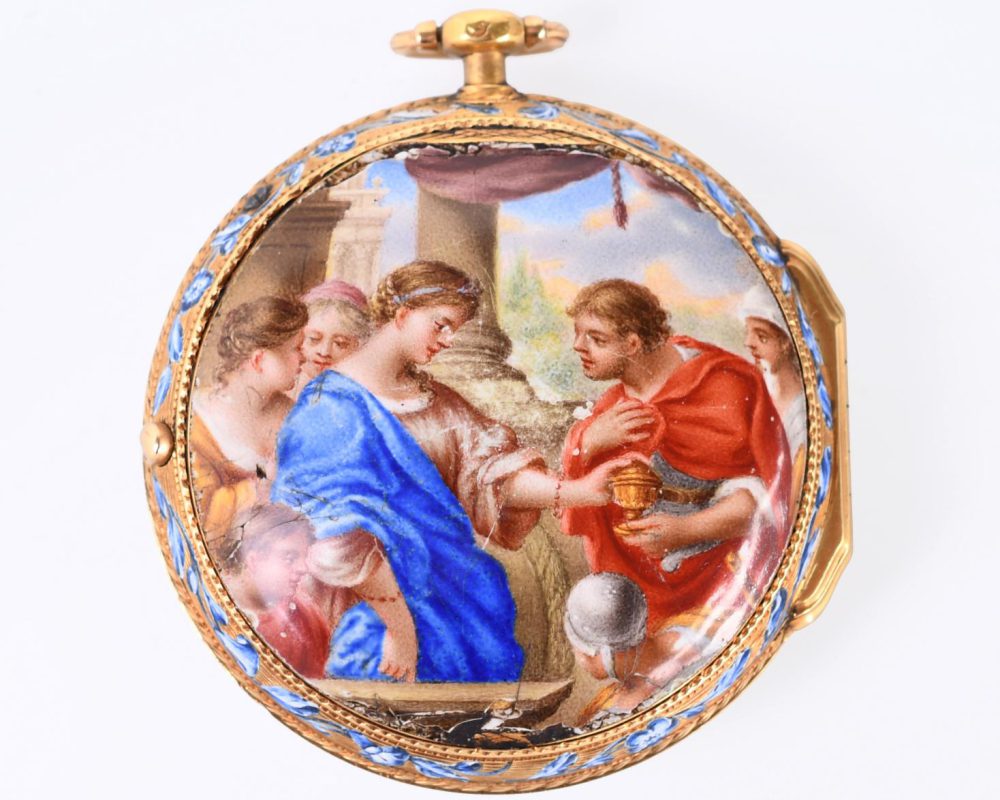

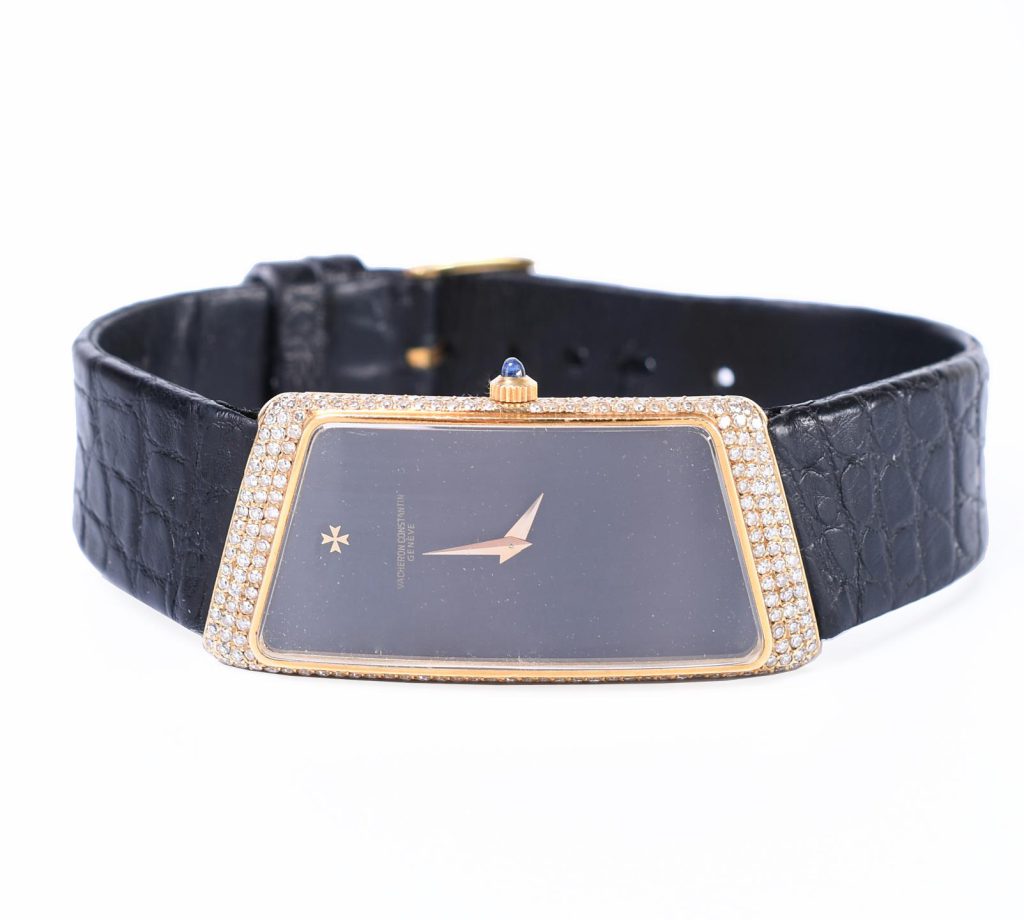
Vacheron Constantin, Prestige de la France
It is June 23, 1972; the French Minister of Science and Industry, François-Xavier Ort, presents the coveted ‘Diplôme du Prestige de la France’ award to Vacheron Constantin on behalf of the Comité de France at the famous Ritz Hotel in Paris. The award is a tribute to the technical perfection, aesthetics and expertise of this watch manufacturer whose history dates back to 1755.
As a result, Vacheron Constantin designs a series of watches that bear the same name as the award; ‘Prestige de la France’. With an asymmetrical case, based on the golden ratio and a mechanism with a thickness of only 1.64 mm, the watch is still groundbreaking and highly sought after. The copy we offer was purchased in the 1970s at Ace & Spyer on Koningsplein.
Lot number 518: Vacheron Constantin, 18 k. gold mechanical men’s wristwatch set with single cut diamonds
One of the most unique watches in the world; the Astrolabium Galileo Galilei by Ulysse Nardin
In the early 1980s, a brand new director of Ulysse Nardin decided that the brand needed a watch that was unique in all respects. Due to the rise of cheap quartz movements in the 1970s, the company found itself in a downturn. A new impetus would not only be very welcome economically, but would also put the company back on the world market as a celebrated watch manufacturer. In 1985, Ulysse Nardin presented the first watch from ‘The Trilogy of Time’. It is the first astrolabe, named after the famous Italian scientist Galileo Galilei, that can be worn on the wrist. The Astrolabe shows local and solar time, the orbits and eclipses of the sun and moon and the positions of various major stars. In addition to the usual hour and minute indication, the dial shows the cardinal points, the Tropics of Cancer and Capricorn, the equator, horizon, the positions of the sun and moon and the ecliptic. Because of these 21 functions, the watch was included in the Guinness Book of Records.
The enormous success of the Astrolabe led to a follow-up of two other scientific watches; the Planetarium Copernicus (1988) and the Tellurium Johannes Kepler (1992). These three special pieces have earned a special place in the history of the watch. The watch we offer comes with the original wooden box.
